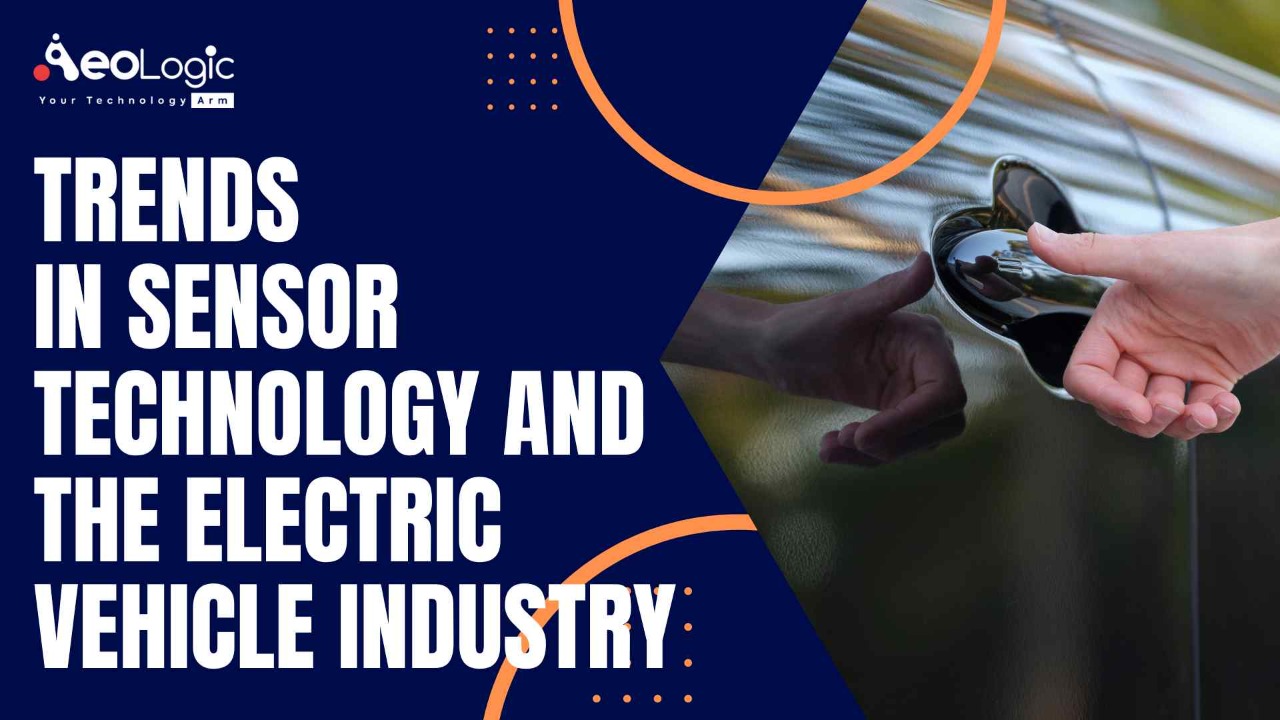Electric cars are attracting attention. And it is not surprising in the transportation industry. In the last few years, there has been a race by auto manufacturers to get electric trucks and cars to the masses. As consumers are now more environmentally aware, the market is becoming more competitive. And governments are taking legislative steps to reduce carbon emissions. With this step, trends in sensor technology are also gaining popularity.
New technology is promoting more new technology. The electric vehicle sensor market will develop as the electric vehicle market grows. The cause is simple: EVs need accurate and high-performing sensor technology to ensure performance and safety just as vehicles with an internal combustion engine.
Also read: The Role Of IoT & AI In Battery Management Of Electric Vehicles
Trends in Sensor Technology: The Key to Continued Industry Growth
The role of sensor technology, especially in battery management, will become crucial. Since the global fleet of vehicles transitions away from fossil fuels and into electricity. An EV’s battery system needs constant monitoring to ensure optimal safety and performance, just like the fueling system of an internal combustion engine.
Trends in sensor technology for EV batteries are more than an updated version of a gas gauge. They are sophisticated equipment for measuring key performance elements, like:
Thermal Management
Extreme heat is one of the most unfavorable factors for environments for an EV’s battery. Thermal runaway may occur if left uncontrolled. It is an event where a battery cell degrades. Therefore, releasing flammable gasses. The battery thermal event can even result in a chain reaction through the entire battery pack without intervention, with more cells undergoing thermal runaway until the pack is fully damaged beyond repair. Moreover, motors, inverters, and batteries have a temperature window where the performance is high. However, performance lowers outside that window. For batteries, the optimal range is between 15 °C to 35 °C.
The internal kinetics of the cell drive lower charge and discharge rates at colder temperatures, reducing available pack power.
Battery cells can damage quickly at higher temperatures. Hence requires the system to be controlled by heat exchangers that can both extract heat from the cells or add heat as needed and all demand accurate temperature sensor feedback.
Humidity
For a manufacturing EV battery design, the worst enemy next to overheating is humidity as condensation comes with humidity. Condensation implies a higher risk for a short circuit in an EV battery pack. An electrical short in an EV is enough to result in a thermal runaway or other malfunctions.
Monitoring the battery pack for condensation buildup over long life spans has become more of an issue. Water from humidity in the form of condensate and the possible risk for small leaks in the pack’s cooling system can indicate electrical shorts and corrosion. Further, damaging the pack and hydrolyzing and forms dangerous levels of hydrogen gas.
Energy Management
Other trends in sensor technology are Energy Management. A lot of energy is needed to run an electric vehicle of any size or type. So, regulating its energy intake during charging and consumption during utilization is important for consistent performance.
One of the major requirements consumers are looking for in Evs – is fast charging. It requires persistent monitoring, as quickly charging a lithium-ion battery can cause overheating in rare instances.
Sensors designed to handle several systems are key to helping the owner get the most from their vehicle without worry, from a vehicle’s HVAC to even a regenerative braking system.
One example includes monitoring the temperature of the vehicle’s charging links. In the high voltage connections, higher than expected temperatures indicates that a plug or charging handle is worn out and requires a replacement.
Battery Health
For many potential adopters, both short- and long-term EV battery performance is thought to be blocked. How can they trust a vehicle will not just leave them stranded? For the vehicle owner, understanding an EV’s overall battery health serves three functions:
- Evaluating its usefulness over the life of the vehicle
- Knowing how far the vehicle can travel on its current charge
- Recognizing small performance issues before they become bigger
Conclusion
The long-term future of electrified transportation is comparatively dependent on the availability of accurate and dependable sensors. Even though there is still some consumer reluctance to accept the current evolution in transportation. Today’s electric vehicle sensors can confirm a bus, car or even a plane ride is of a much higher quality. Offering noiseless experience than today’s thermal engine technology.
Also read: Challenges and Advancements in Electric Vehicle Battery Technology
Connect with us at Aeologic Technologies to know more!
FAQs
What is the role of sensors in electric vehicles?
Sensors provide electric vehicles with an approach to evaluate currents and voltages, from ignition to the battery system, drive train, and everything connected to vehicle operation and safety. Control system sensors get the measured signals. Subsequently, manage systems throughout the vehicle.
Why electric vehicles are the future?
Electric vehicles (EVs) provide an opportunity to substitute fossil fuels in the transport industry. Electrification of the transport industry can also achieve benefits in terms of increased energy efficiency and reduced local pollution.









